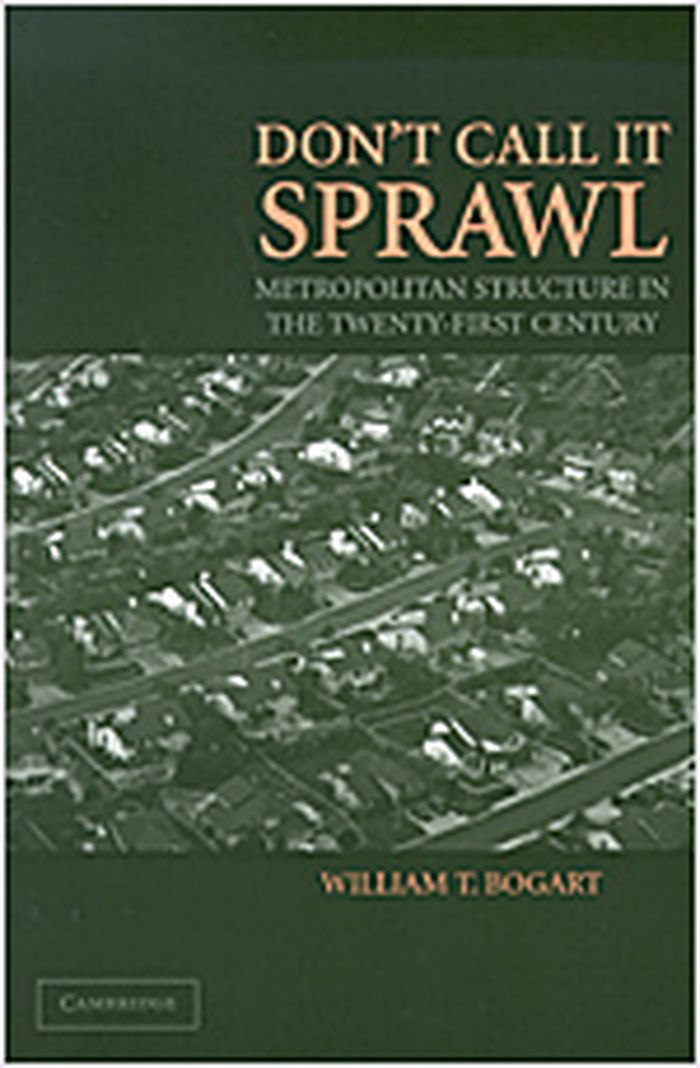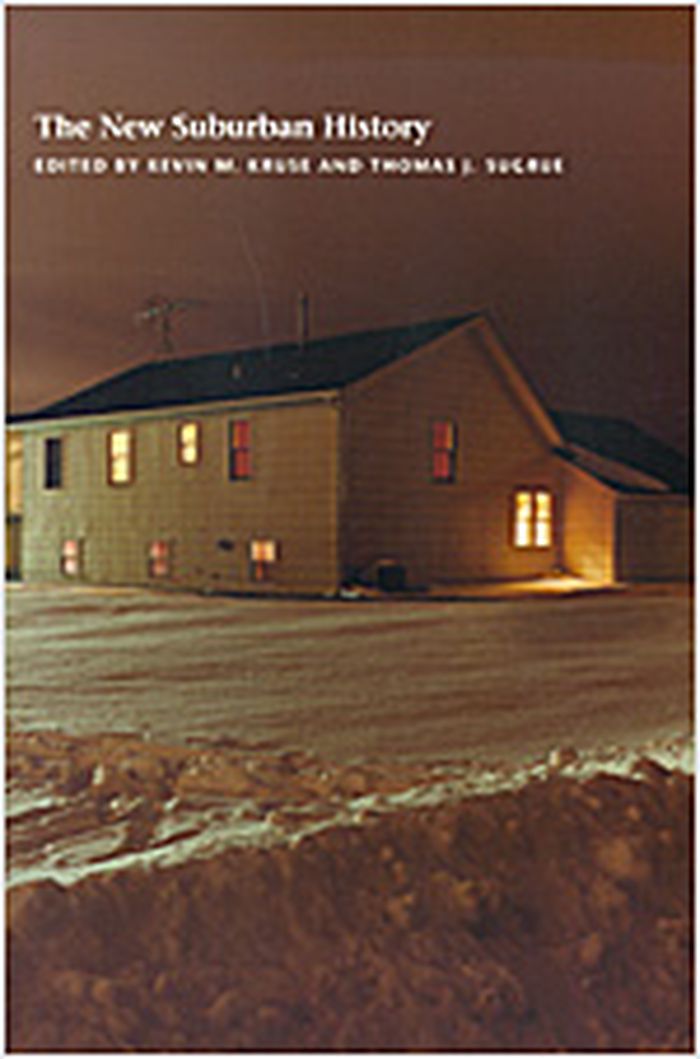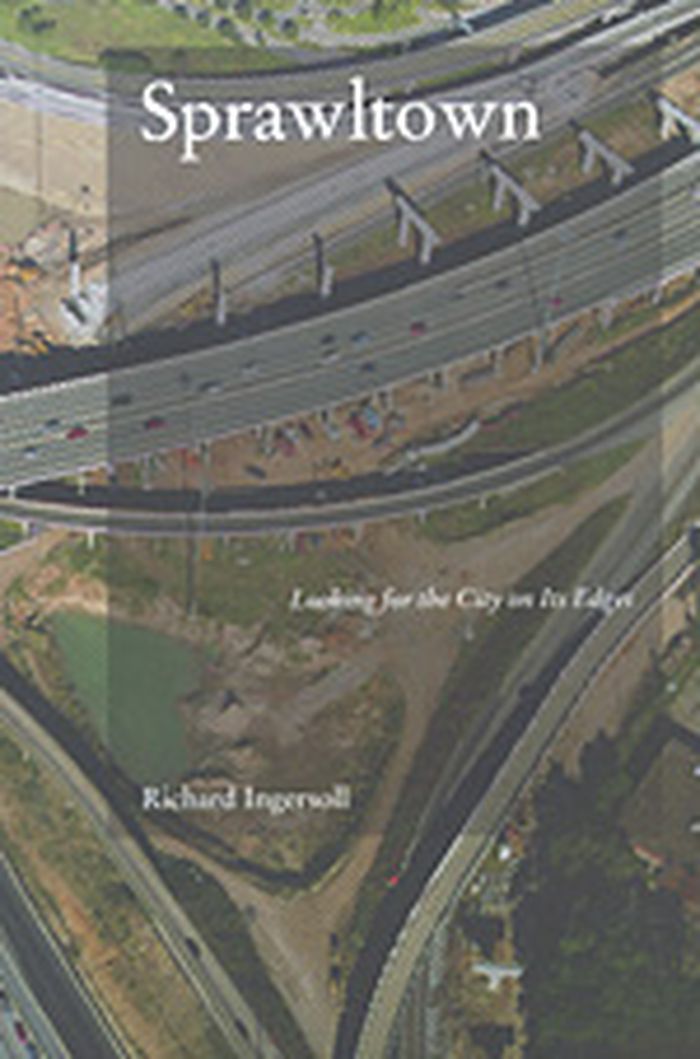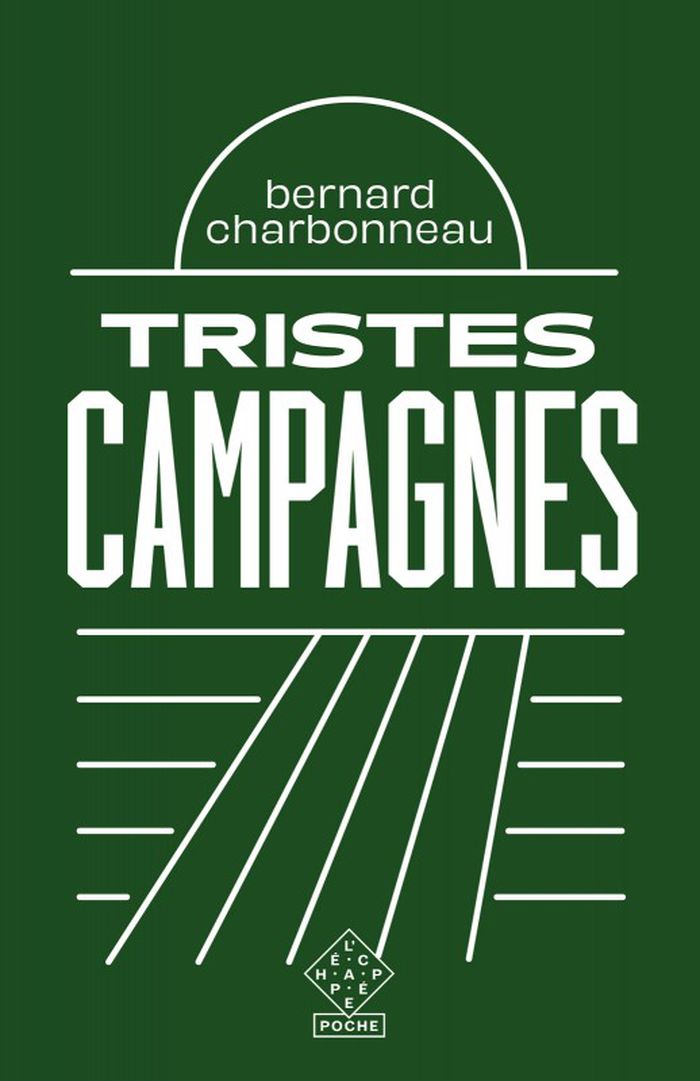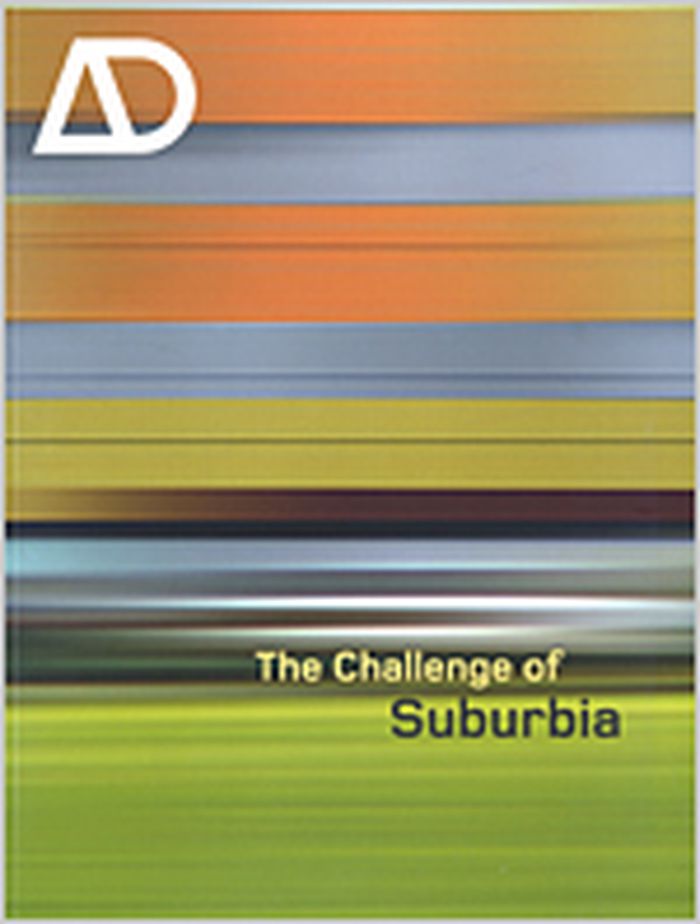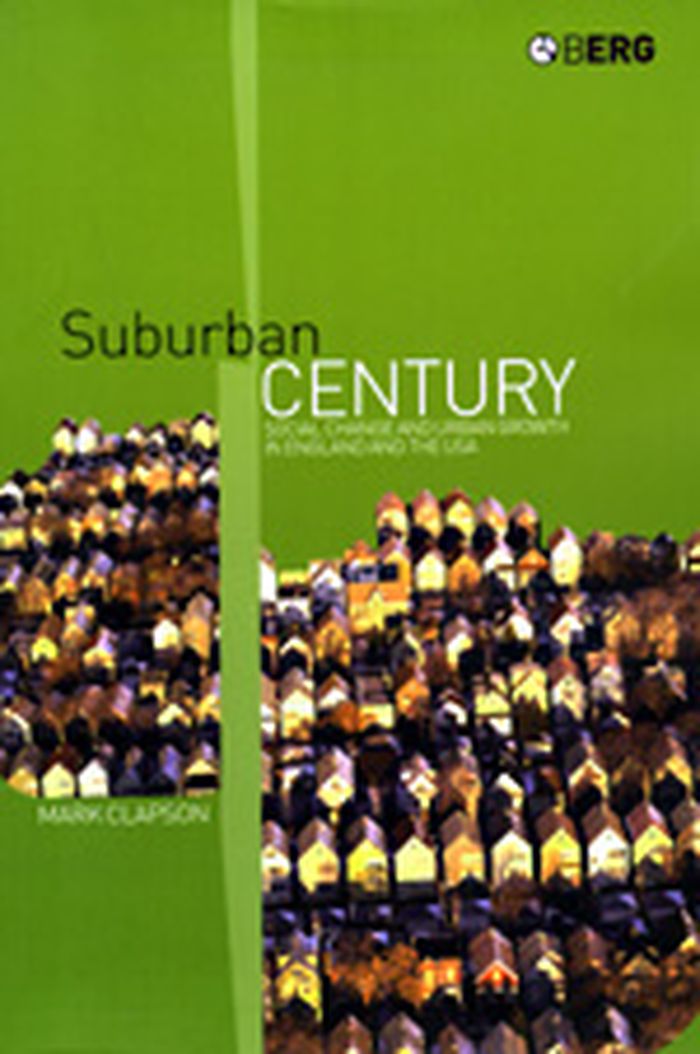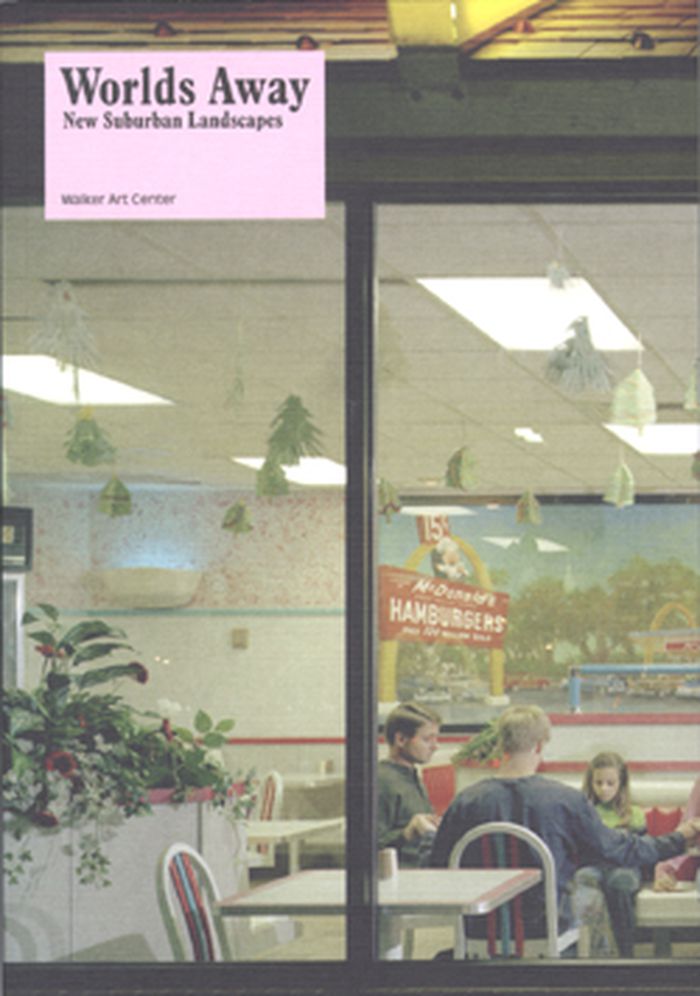$28.95
(available to order)
Summary:
In "Don't call it sprawl", the current policy debate over urban sprawl is put into a broader analytical and historical context. The book informs people about the causes and implications of the changing metropolitan structure rather than trying to persuade them to adopt a panacea to all perceived problems. Bogart explains modern economic ideas about the structure of(...)
Don't call it sprawl : metropolitan structure in the twenty-first century
Actions:
Price:
$28.95
(available to order)
Summary:
In "Don't call it sprawl", the current policy debate over urban sprawl is put into a broader analytical and historical context. The book informs people about the causes and implications of the changing metropolitan structure rather than trying to persuade them to adopt a panacea to all perceived problems. Bogart explains modern economic ideas about the structure of metropolitan areas to people interested in understanding and influencing the pattern of growth in their city. Much of the debate about sprawl has been driven by a fundamental lack of understanding of the structure, functioning, and evolution of modern metropolitan areas. The book analyzes ways in which suburbs and cities (trading places) trade goods and services with each other. This approach helps us better understand commuting decisions, housing location, business location, and the impact of public policy in such areas as downtown redevelopment and public school reform.
Suburbs
books
When America became suburban
$23.95
(available to order)
Summary:
In the decades after World War II, the United States became the most prosperous nation in the world and a superpower whose dominance was symbolized by the American suburbs. Spurred by the decline of its industrial cities and by mass suburbanization, people imagined a new national identity—one that emphasized consumerism, social mobility, and a suburban lifestyle. The(...)
When America became suburban
Actions:
Price:
$23.95
(available to order)
Summary:
In the decades after World War II, the United States became the most prosperous nation in the world and a superpower whose dominance was symbolized by the American suburbs. Spurred by the decline of its industrial cities and by mass suburbanization, people imagined a new national identity—one that emphasized consumerism, social mobility, and a suburban lifestyle. The urbanity of the city was lost. In "When America became suburban", Robert A. Beauregard examines this historic intersection of urban decline, mass suburbanization, domestic prosperity, and U.S. global aspirations as it unfolded from 1945 to the mid-1970s. Suburban expansion and the subsequent emergence of sprawling Sunbelt cities transformed every aspect of American society. Assessing the global implications of America’s suburban way of life as evidence of the superiority of capitalist democracy, Beauregard traces how the suburban ideology enabled America to distinguish itself from both the Communist bloc and Western Europe, thereby deepening its claim of exceptionalism on the world-historical stage. Placing the decline of America’s industrial cities and the rise of vast suburban housing and retail spaces into a cultural, political, and global context, Beauregard illuminates how these phenomena contributed to a changing notion of America’s identity at home and abroad. "When America became suburban" brings to light the profound implications of de-urbanization: from the siphoning of investments from the cities and the effect on the quality of life for those left behind to a profound shift in national identity.
books
September 2006, Minneapolis, London
Suburbs
The new suburban history
$29.95
(available to order)
Summary:
America has become a nation of suburbs. Confronting the popular image of suburbia as simply a refuge for affluent whites, "The new suburban history" rejects the stereotypes of a conformist and conflict-free suburbia. The seemingly calm streets of suburbia were, in fact, battlegrounds over race, class, and politics. With this collection, Kevin Kruse and Thomas Sugrue argue(...)
The new suburban history
Actions:
Price:
$29.95
(available to order)
Summary:
America has become a nation of suburbs. Confronting the popular image of suburbia as simply a refuge for affluent whites, "The new suburban history" rejects the stereotypes of a conformist and conflict-free suburbia. The seemingly calm streets of suburbia were, in fact, battlegrounds over race, class, and politics. With this collection, Kevin Kruse and Thomas Sugrue argue that suburbia must be understood as a central factor in the modern American experience. Kruse and Sugrue here collect ten essays—augmented by their provocative introduction—that challenge our understanding of suburbia. Drawing from original research on suburbs across the country, the contributors recast important political and social issues in the context of suburbanization. Their essays reveal the role suburbs have played in the transformation of American liberalism and conservatism; the contentious politics of race, class, and ethnicity; and debates about the environment, land use, and taxation. The contributors move the history of African Americans, Latinos, Asians, and blue-collar workers from the margins to the mainstream of suburban history. From this broad perspective, these historians explore the way suburbs affect—and are affected by—central cities, competing suburbs, and entire regions. The results, they show, are far-reaching: the emergence of a suburban America has reshaped national politics, fostered new social movements, and remade the American landscape. "The new suburban history" offers nothing less than a new American history—one that claims the nation cannot be fully understood without a history of American suburbs at its very center.
Suburbs
books
Sprawl, a compact history
$18.95
(available to order)
Summary:
The author demonstrates that urban sprawl is a natural process as old as the world's oldest cities, wherein large metropolises reach a point of maturity and those with financial means escape the congestion and high prices of city life. What has changed over the past century, the author says, is that an increasing number of citizens have achieved the financial means to(...)
Sprawl, a compact history
Actions:
Price:
$18.95
(available to order)
Summary:
The author demonstrates that urban sprawl is a natural process as old as the world's oldest cities, wherein large metropolises reach a point of maturity and those with financial means escape the congestion and high prices of city life. What has changed over the past century, the author says, is that an increasing number of citizens have achieved the financial means to participate in what was once an exclusive luxury of the wealthy. Bruegmann acknowledges that the effects on cities are not always positive, but he also demonstrates that many of the criticisms of suburban sprawl—e.g., that it is culturally deficient and environmentally noxious—are greatly exaggerated and ignore the very real benefits sprawl offers in terms of privacy, mobility and choice.
books
October 2006
Suburbs
$22.50
(available to order)
Summary:
Sprawl. The word calls to mind a host of troublesome issues such as city flight, runaway suburban development, and the conversion of farmland to soulless housing developments. In "Sprawltown", architectural historian Richard Ingersoll makes the surprising claim that sprawl is an inevitable reality of modern life that should be addressed more thoughtfully and recognized as(...)
Sprawltown : looking for the city on its edges
Actions:
Price:
$22.50
(available to order)
Summary:
Sprawl. The word calls to mind a host of troublesome issues such as city flight, runaway suburban development, and the conversion of farmland to soulless housing developments. In "Sprawltown", architectural historian Richard Ingersoll makes the surprising claim that sprawl is an inevitable reality of modern life that should be addressed more thoughtfully and recognized as its own new form of urbanism rather than simply being criticized and condemned. In five chapters, covering topics such as tourism, film, and the automobile, Ingersoll takes the position that any solution to the problems of sprawl—including pressing issues like resource use and energy waste— must take into consideration its undeniable success as a social milieu. No screed against the suburb, this book offers a more sophisticated and nuanced view of the way we think about its rapid development and growth.
Suburbs
Tristes campagnes
$22.95
(available to order)
Summary:
« On pleure les Indiens des autres, mais on tue les siens », constate Bernard Charbonneau alors que l’on anéantit nos campagnes, dans la souffrance contenue, avec la froideur administrative d’un plan de réforme pour l’agriculture européenne. Face à la rationalisation de la production, la concentration des terres, le développement de zones pavillonnaires et de complexes(...)
Tristes campagnes
Actions:
Price:
$22.95
(available to order)
Summary:
« On pleure les Indiens des autres, mais on tue les siens », constate Bernard Charbonneau alors que l’on anéantit nos campagnes, dans la souffrance contenue, avec la froideur administrative d’un plan de réforme pour l’agriculture européenne. Face à la rationalisation de la production, la concentration des terres, le développement de zones pavillonnaires et de complexes touristiques, les paysans sont priés de s’adapter. Les sociétés locales disparaissent, emportées par l’essor d’une banlieue uniforme et d’une industrie totale. On parle de progrès technique, mais il s’agit d’un ethnocide.
Suburbs
The challenge of suburbia
$54.99
(available to order)
Summary:
For an increasing number of people living in Western societies, suburbia is the primary living environment. For example, in the United States more people live in the suburbs than in cities. As a result, 75% of all new construction in the United States is in suburbia when only 5% of this is architect-designed. This new book from Architectural Design presents an(...)
The challenge of suburbia
Actions:
Price:
$54.99
(available to order)
Summary:
For an increasing number of people living in Western societies, suburbia is the primary living environment. For example, in the United States more people live in the suburbs than in cities. As a result, 75% of all new construction in the United States is in suburbia when only 5% of this is architect-designed. This new book from Architectural Design presents an opportunity for architects to rake back a large sector of the housing and construction industry. It argues that suburbia offers a far greater potential for innovation than more conventional urban milieus.
Suburbs
$37.50
(available to order)
Summary:
In this wide-ranging comparative study of England and the United States, Mark Clapson offers new interpretations on suburbia. The majority of people in both countries now live in suburbs, largely as a result of the rising affluence of the postwar period. Millions of Americans pursued an aspiration to settle away from the poorer town and city centres in new subdivisions,(...)
Suburban century : social change and urban growth in England and the United States
Actions:
Price:
$37.50
(available to order)
Summary:
In this wide-ranging comparative study of England and the United States, Mark Clapson offers new interpretations on suburbia. The majority of people in both countries now live in suburbs, largely as a result of the rising affluence of the postwar period. Millions of Americans pursued an aspiration to settle away from the poorer town and city centres in new subdivisions, while in England people were keen to leave terraced streets and poorer suburban housing areas. Examining housing policies, the politics of affluence and social class, Clapson challenges deeply held myths by demonstrating the complexity of suburban life. He shows how suburbs are becoming increasingly multicultural and compares the minority experience in both countries. He analyzes voting patterns to reveal some surprising political trends. In addition, he discusses gender and the experience of community life. Throughout, he uncovers the similarities and differences in the English and American experience of suburbanization in the twentieth century.
Suburbs
$34.95
(available to order)
Summary:
Text by John Archer, David Brooks, Robert Bruegmann, Beatriz Colomina, Malcolm Gladwell. Worlds Away: New Suburban Landscapes is the first major museum exhibition to examine both the art and architecture of the contemporary American suburb. Featuring paintings, photographs, prints, architectural models, sculptures and video from more than 30 artists and architects,(...)
Worlds Away. New Suburban Landscapes
Actions:
Price:
$34.95
(available to order)
Summary:
Text by John Archer, David Brooks, Robert Bruegmann, Beatriz Colomina, Malcolm Gladwell. Worlds Away: New Suburban Landscapes is the first major museum exhibition to examine both the art and architecture of the contemporary American suburb. Featuring paintings, photographs, prints, architectural models, sculptures and video from more than 30 artists and architects, including Christopher Ballantyne, Center for Land Use Interpretation, Gregory Crewdson, Estudio Teddy Cruz, Dan Graham and Larry Sultan
Suburbs
books
$22.00
(available in store)
Summary:
This volume is one of three books in The Michigan Debates on Urbanism, a series that also features Everyday Urbanism and New Urbanism. Each book represents a distinct, inevitable, but still-emerging paradigm in contemporary urbanism, and is an elaboration of public debates held at the University of Michigan’s Taubman College of Architecture and Urban Planning during the(...)
Post urbanism & Re urbanism : Peter Eisenman vs. Barbara Littenberg and Steven Peterson, Michigan debates on urbanism vol. III
Actions:
Price:
$22.00
(available in store)
Summary:
This volume is one of three books in The Michigan Debates on Urbanism, a series that also features Everyday Urbanism and New Urbanism. Each book represents a distinct, inevitable, but still-emerging paradigm in contemporary urbanism, and is an elaboration of public debates held at the University of Michigan’s Taubman College of Architecture and Urban Planning during the winter of 2004. Peter Eisenman, acclaimed New York architect, author and theorist, presents several of his recent projects, including his team’s entry for the controversial Ground Zero competition at the World Trade Center site in lower Manhattan. This project and the larger body of his work are termed Post Urbanist by the series editor Douglas Kelbaugh. Post Urbanism refers to a critical, post-structuralist project, expressing avant-garde sensibilities and the techno-flow of a globalizing society. Barbara Littenberg and partner Steven Peterson, also well-known design practitioners from New York, present their entry into the Ground Zero competition, as well as other urban design projects that are characterized as ReUrbanism. Each side takes strong exception to the other’s work, leading to a heated discussion moderated by Roy Strickland, Director of the Master of Urban Design program at Taubman College.
books
February 2005, Ann Arbor
Suburbs
